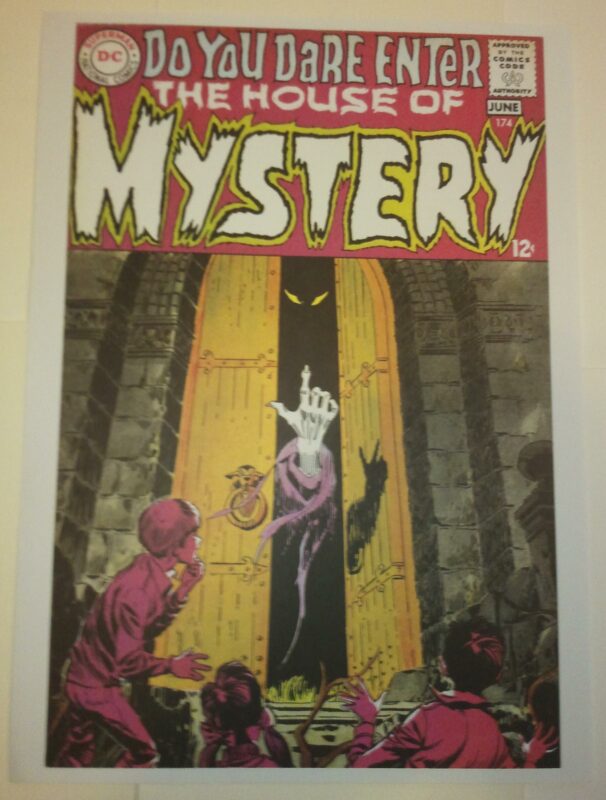Description
House of Mystery started out as a horror anthology, featuring tales of the supernatural as well as supernatural-themed mystery stories. With the growing backlash against horror comics in the mid-1950s, as well as the advent of the Comics Code Authority and its restrictions on horror-themed storylines (banning stories dealing with such supernatural fare as werewolves, vampires, and such), the series quietly was revamped into dealing with science-fiction type monsters and other mystery-suspense type tales that were permitted by the comic code. In the mid-1960s, the comic was revamped to include super-hero stories: From House of Mystery #143 (June 1964) through #155 (December 1966), “J’onn J’onzz, the Manhunter from Mars” headlined the book, as his back-up feature from Detective Comics was moved to House of Mystery. This was followed up with the introduction of “Dial H for Hero” in issue #156 (January 1966), which took over as headliner until #173 (March–April 1968). The Martian Manhunter was again relegated to back-up status during this time. With issue #174, EC Comics veteran Joe Orlando was hired by DC to take over as editor of House of Mystery. As the Comics Code Authority was now being challenged by both DC and Marvel over content restrictions, the series returned to its overt horror themes. The first issue under Orlando would be a reprint issue of old horror/suspense stories, as the new direction would truly begin with #175 (July/August 1968). The issue would introduce a new figure to the series, Cain, the “able care taker” of the House of Mystery who would introduce nearly all stories that would run in the series before its cancellation. Cain would also host the spin-off humor series Plop! and later become a recurring character in Blue Devil and The Sandman. The House of Mystery exists as a location in the DC Universe simultaneously in Kentucky and in The Dreaming. The origins of the House of Mystery are unknown. In fact, very little is known about the House of Mystery in general. The architecture is indeterminate and changes periodically. The same holds true for the inside of the house: the rooms constantly shift, and one never enters the same room twice. The House of Mystery lies in the same graveyard as the House of Secrets, its companion. Whereas Abel resides in the House of Secrets, Cain makes the House of Mystery his abode. Cain is not the only person to have resided within the House; in addition to boarders, including Mister Mxyzptlk, Elvira took shelter within the House. Her brief stay in the House of Mystery is notable for two reasons: first, the House of Mystery is established as being the same House throughout its publication history. Three distinct personalities of the House are shown: the original horror House of Mystery, a dark humor “House of Weirdness”-style which harkened back to Cain’s stint in Plop!, and the current version of the House of Mystery in Kentucky. The second reason is the timing of Elvira’s stay. She took up residence during the Crisis on Infinite Earths. Elvira, tasked by the House of Mystery to find Cain, took over his role of host for a brief period, while Cain was relegated to being the butt of jokes during occasional cameos. The House of Mystery possesses sentience, along with mystic powers. It has possessed someone before, and merged with the House of Secrets briefly. This ties into the constantly shifting appearance of the House of Mystery. It was torn down in the metafictional The House of Mystery #321, but its existence was restored during the Crisis. Batman entered the house in The Brave and the Bold #93, tripped on a floorboard, and would have been shot had his pursuer’s gun not jammed. He never actually met Cain, who instead narrates a story about him occurring in Scotland, which climaxes in a castle he describes as “a house of mystery” rather than “the House of Mystery.” Superman teamed with Cain against Mister Mxyzptlk, who was attempting to take over the House, in DC Comics Presents #53. The House of Mystery appears mainly in various Vertigo titles, especially those tied into Neil Gaiman’s Sandman; it has appeared briefly in Resurrection Man. Something called the House of Mystery appeared in 52 #18, where it seems to have been used for some time as a base for a team of detectives called the Croatoan Society, which counts both Detective Chimp and Ralph Dibny as members. It is unclear if the Croatoan’s House of Mystery is meant to be the same as the original House of Mystery, a post-Infinite Crisis version of the original House of Mystery, or simply a different location with the same name. Cain’s name appeared on this house’s mailbox, implying some sort of connection to the original House. The House reappeared in The New 52 in the pages of Justice League Dark, being used as a base for the team. The House is shown to currently belong to John Constantine, who claims to have won the key to the house in a poker game against Doctor Occult and Father Time. Joseph Orlando (April 4, 1927 – December 23, 1998) was a prolific illustrator, writer, editor and cartoonist during a lengthy career spanning six decades. He was the associate publisher of Mad and the vice president of DC Comics, where he edited numerous titles and ran DC’s Special Projects department. In 1987, he created an illustration for the supplemental text piece from Watchmen #5, a page from the comic-within-the-comic, Tales of the Black Freighter. Orlando’s contribution was designed as if it were a page from the fake title; the conceit being that Orlando had been the artist for a run of stories from the fictional Tales of the Black Freighter comic. Watchmen writer Alan Moore chose Orlando because he felt that if pirate stories were popular in the Watchmen universe, DC editor Julius Schwartz would have lured Orlando into drawing a pirate comic book. The comic-within-a-comic pages were credited to the fictitious artist “Walt Feinberg”, and all art attributed to Feinberg was actually drawn by series-artist Dave Gibbons. The Orlando page was the only artwork for the series not by Gibbons.
Related products
-
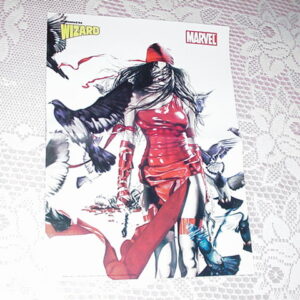
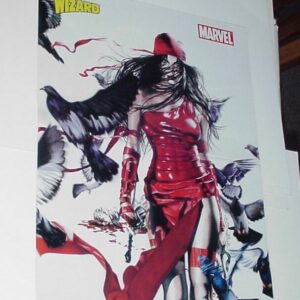
Elektra Poster # 2 by Rodolfo Migliari Daredevil Thunderbolts
$29.99 Add to cart -


X-Men Poster #36 Mystique Joseph Michael Linsner Dawn
$34.99 Add to cart -
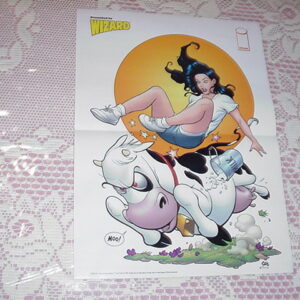
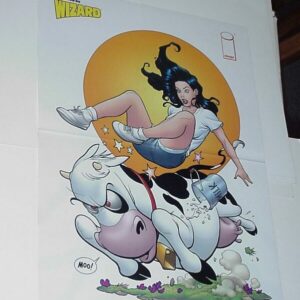
Liberty Meadows Poster # 1 The Cow vs Brandy by Frank Cho University2
$29.99 Add to cart -
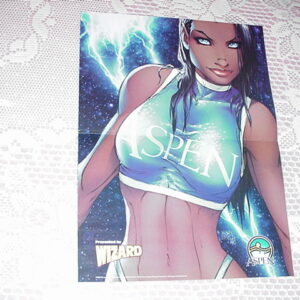
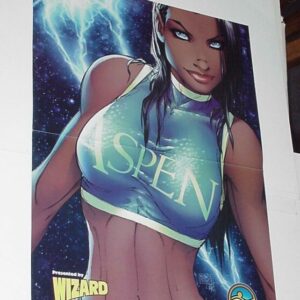
Fathom Poster # 9 Aspen Shirt Michael Turner Matthews Superman
$39.99 Add to cart



